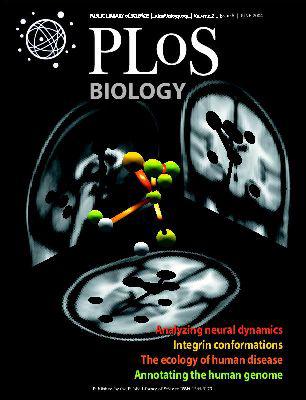kākāpō结构颜色多态性的遗传基础表明,一种已灭绝的顶级掠食者进行了平衡选择。
IF 7.8
1区 生物学
Q1 BIOCHEMISTRY & MOLECULAR BIOLOGY
引用次数: 0
摘要
种群基因组数据中包含的信息可以告诉我们很多关于物种过去的生态学和进化的信息。我们利用几乎所有现存卡帕鸟的详细表型和基因组数据来了解其羽毛颜色多态性的演变。kākāpō是新西兰奥特亚罗瓦特有的一种濒危鹦鹉,具有重要的文化意义。由于目前整个种群的数量不足 250 只,这意味着该种群已经遭受了严重的遗传漂变,因此出现这种整齐平衡的颜色多态性是非常难能可贵的。我们对颜色表型进行了剖析,证明两种颜色的光反射模式不同是由于羽毛结构不同造成的。我们利用定量基因组学方法确定了两个遗传变异,这两个变异的表观相互作用可以完全解释该物种的颜色表型。我们的基因组正向模拟显示,平衡选择可能是在祖先庞大的种群中建立多态性的关键,并在涉及严重瓶颈的种群衰退过程中维持多态性。我们假设,一种已灭绝的顶级捕食者可能是平衡选择的媒介,从而使 kākāpō 中的颜色多态性成为 "过去选择的幽灵"。本文章由计算机程序翻译,如有差异,请以英文原文为准。
The genetic basis of the kākāpō structural color polymorphism suggests balancing selection by an extinct apex predator.
The information contained in population genomic data can tell us much about the past ecology and evolution of species. We leveraged detailed phenotypic and genomic data of nearly all living kākāpō to understand the evolution of its feather color polymorphism. The kākāpō is an endangered and culturally significant parrot endemic to Aotearoa New Zealand, and the green and olive feather colorations are present at similar frequencies in the population. The presence of such a neatly balanced color polymorphism is remarkable because the entire population currently numbers less than 250 birds, which means it has been exposed to severe genetic drift. We dissected the color phenotype, demonstrating that the two colors differ in their light reflectance patterns due to differential feather structure. We used quantitative genomics methods to identify two genetic variants whose epistatic interaction can fully explain the species' color phenotype. Our genomic forward simulations show that balancing selection might have been pivotal to establish the polymorphism in the ancestrally large population, and to maintain it during population declines that involved a severe bottleneck. We hypothesize that an extinct apex predator was the likely agent of balancing selection, making the color polymorphism in the kākāpō a "ghost of selection past."
求助全文
通过发布文献求助,成功后即可免费获取论文全文。
去求助
来源期刊

PLoS Biology
生物-生化与分子生物学
CiteScore
14.40
自引率
2.00%
发文量
359
审稿时长
3 months
期刊介绍:
PLOS Biology is an open-access, peer-reviewed general biology journal published by PLOS, a nonprofit organization of scientists and physicians dedicated to making the world's scientific and medical literature freely accessible. The journal publishes new articles online weekly, with issues compiled and published monthly.
ISSN Numbers:
eISSN: 1545-7885
ISSN: 1544-9173
 求助内容:
求助内容: 应助结果提醒方式:
应助结果提醒方式:


